2) X-linked inheritance
This is a rather uneventful example meant to showcase the X-linked inheritance analysis support of the app. Additionally, it demonstrates how to set up models with incomplete dominance.
Pedigree table
The data corresponding to the case is shown below:
ped id fid mid sex phenotype carrier proband age
1 1 0 0 1 . . . 80
1 2 0 0 2 . . . 80
1 3 1 2 1 affected het . 40
1 4 0 0 1 nonaff neg . 60
1 5 1 2 2 nonaff het . 60
1 6 4 5 1 affected het 1 40
1 7 4 5 1 affected het . 40
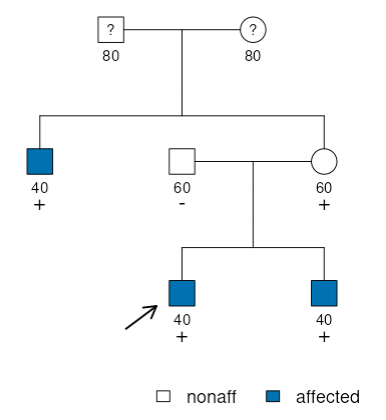
There are three affected members: the proband, his brother, and the maternal uncle. All three are hemizygous for a rare variant on the X-chromosome, which the proband’s mother also carries. Ages are not really important, as they won’t be the focus of this analysis.
Recessive inheritance
A basic model for these data would be to assume complete penetrance for
hemizygous and homozygous carriers, and no phenocopies. This can be
easily accomplished by switching to the Liability class mode and
selecting XR on the Penetrance panel’s header. In this case, the
table has two columns: neg/♀het refers to the penetrance for
non-carriers and heterozygous carriers, while ♂het/hom is for the
hemizygous and homozygous carriers.
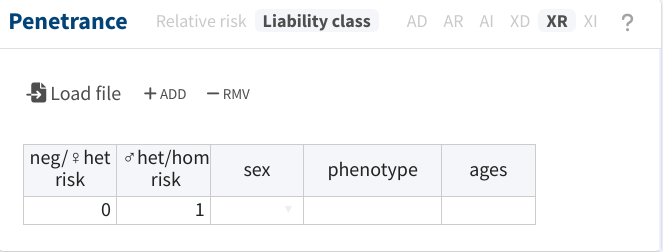
After setting these values, we can proceed to Calculate the evidence for the variant’s pathogenicity.
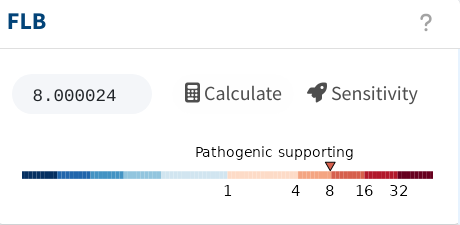
Dominant inheritance
Sometimes it can be interesting to assume a dominant model where hemi-
and heterozygous carriers share the same penetrances. This can be easily
accomplished by switching to XD, and the table will adjust
accordingly.
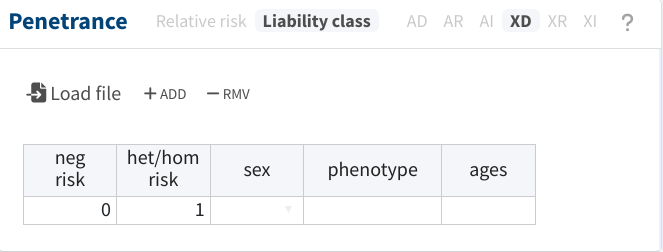
In this particular case, however, attempting to compute cosegregation evidence with these parameters will result in an error notification from the app. This is because the proband’s mother cannot be unaffected and carrier under complete penetrance.
Incomplete dominance
For certain analyses, it may be necessary to separate the penetrances of
hemi- and heterozygous carriers from others. This can be achieved by
switching to XI inheritance. Then, the penetrance table acquires three
columns referring to non-carriers (neg), hemi- and heterozygous
carriers (het), and homozygous carriers (hom). The penetrances of
hemi- and heterozygous carriers can be further differentiated by
defining sex-specific liability classes, as shown below.
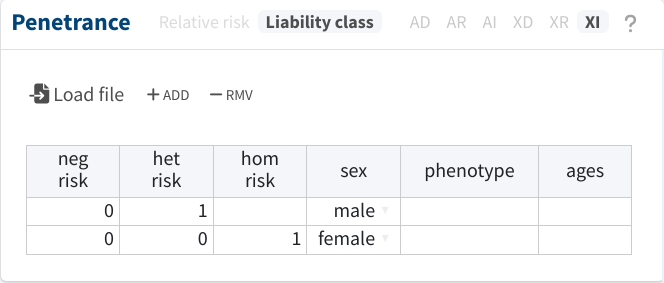
Which should give the same results as the recessive model from before.